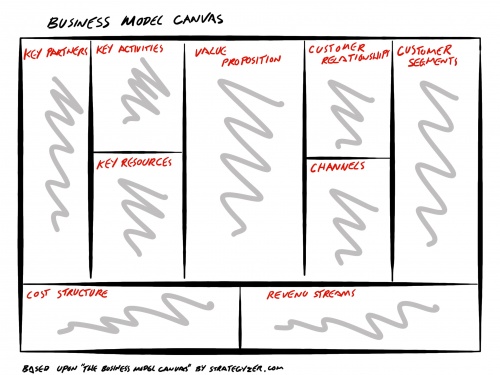Evolutionary Strategy
Products vs. Projects
In recent times there has been a shift from commissioning projects to create and maintain software programs towards considering them as products and enduring assets of the organisation that should be continuously refined.
Projects tend to:
- be a collection of new features and functionality
- be comparatively large batches of change
- handle large risk all at once
- be funded individually
- use time to market as the focus and have estimated, timelines and milestones to be achieved
- be short lived and tactical in nature to fulfil an immediate need
- be based upon a defined and fixed customer experience
- be implemented by a temporary team that disbands after the project
- be made up of a few large releases, and most projects tend to only release once
- be supported by business as usual (BAU) approaches
Products by comparison, tend to:
- be a continual series of small enhancements and new features
- be small batches of change released more often
- handle small amounts of risk more often
- not be funded, however, the team implementing the changes are funded separately on an annual basis
- use value to market as the focus and estimates tend to no longer be needed
- be strategic long-lived assets of the organisation that are curated and continually refined
- be based upon a constantly evolving customer experience
- be refined by a permanent product team that takes accountability for the product
- be updated with a large number of small releases that tend to be automated where possible
- be primarily developed using business as usual (BAU) approaches
Evolving from a project to a product approach can involve some change in mindset, as the product is considered to be a permanent fixture or asset of the organisation that needs to be constantly curated and refined. This involves changing from facilitating large batches of change, measuring progress towards those changes and managing large amounts of risk at once to setting up a constant stream of rapid releases that implement small changes to refine the asset over time.
The benefits of doing this include:
- smoother flow of changes of the asset
- risk is managed continually
- the customer experience is constantly curated and evaluated
- training materials tend not to be needed as the user begins to be educated and guided with small incremental changes
- funding is team oriented rather than work oriented
- rapid releasing more often allows teams to gain more experience at releasing improving their ability to release faster
- rapid releasing improves the organisation’s use of experiments and customer testing for example
Business Model Canvas
The Business Model Canvas or sometimes referred to as the Learning Canvas has a number of sections designed to match perceived customer needs to organisation capabilities.
They can be used to outline the high-level intentions of the product or service and can be evolved over time as more is known to form an evolving strategy. In the example we have the following components:
- Customer Segments – defining which customer groups the product or service is targeting
- Customer Relationships – what relationships do we have with the customers in order to understand them and try new products and features
- Channels – how can the customers be reached and through which channels
- Key Partners – who are our key partners that can help to provide the new product or service
- Key Activities – what are the key activities that we will need to do to achieve the new product or service
- Key Resources – what resources will we need to provide the new product or service
- Value Proposition – after understanding the customer needs and our capabilities, what is the value proposition for the customer and our organisation
- Cost Structure – what costs do we perceive to provide the new product or service
- Revenue Streams – how do we expect to make revenue from the new product or service
Business Model Canvasses are often used to provide context for new products and features, and can be used as hypotheses to be proved, refined or disproved in an experimental cycle.
